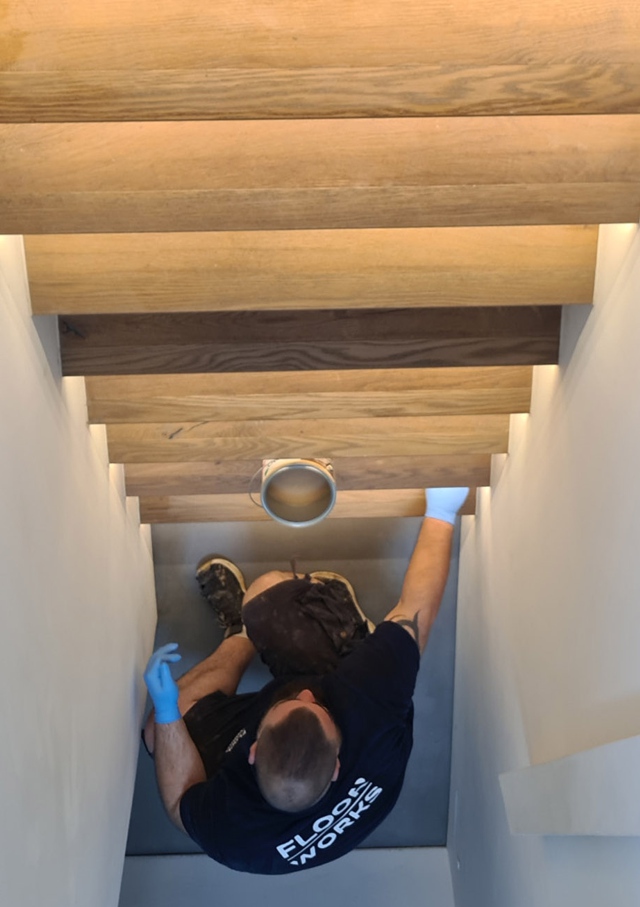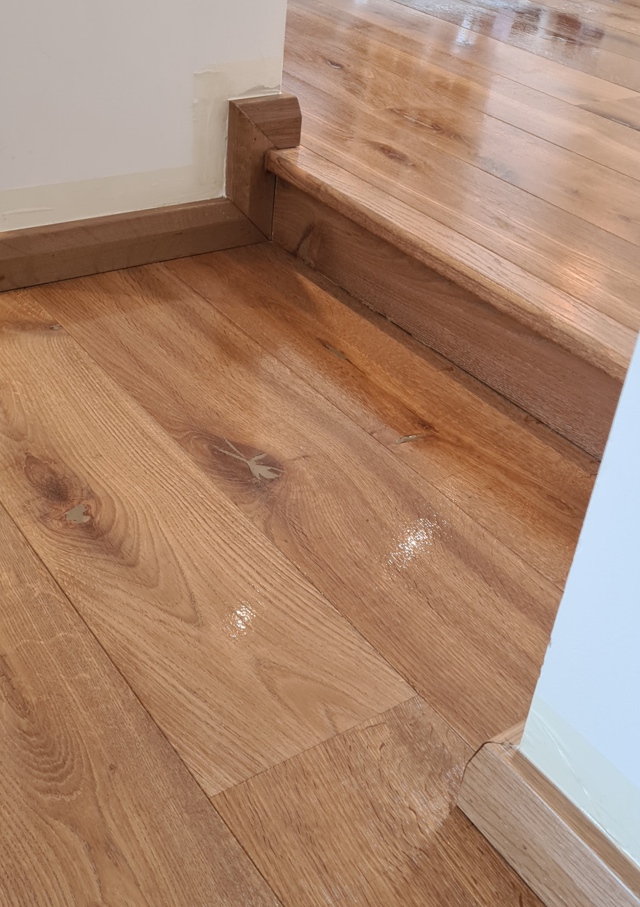Re-Oiling Service for Wooden Floors
Oiled or brushed & oiled wooden floors require regular extra coat to preserve their protection depending on the use of the floors
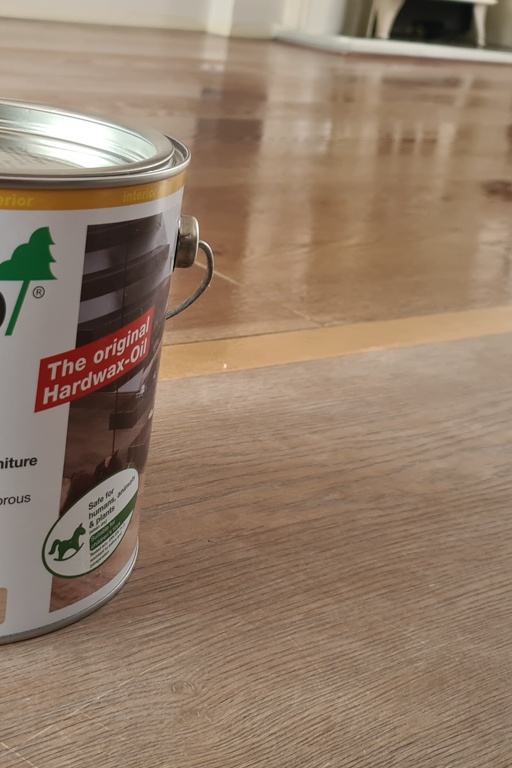
Oiled wooden floors bring a timeless, natural elegance to any home. The rich, authentic look of the grain and the warm, inviting feel underfoot are hard to match. However, to keep these beautiful surfaces looking their best and protected from the rigours of daily life, regular maintenance is key.
At Floorworks, we are experts in floor finishing and our professional oiling & recoating service is designed to nourish and revitalise your oiled wooden floors, ensuring they remain a stunning feature of your home for years to come.
What is Re-Oiling Service About & Why is Essential?
Unlike lacquered or varnished floors that have a protective film sitting on top of the wood, oiled floors are treated with oils that penetrate deep into the wood fibres. This provides a more natural finish and feel, but it also means the protective layer wears down over time with foot traffic, cleaning, and exposure to sunlight.
Our re-oiling service is a straightforward yet crucial maintenance procedure that replenishes the protective oils in your wooden floor. This process not only restores the floor's beautiful lustre but, more importantly, it nourishes the wood, preventing it from drying out, cracking, or becoming susceptible to stains and damage.
This service is suitable for all types of wood flooring treated with oil, including solid wood, engineered wood, and parquet floors.

How Often Should My Floors by Oiled?
The frequency of recoating depends on the amount of foot traffic your floors endure. Here's a general guide:
High-traffic areas such as hallways, kitchens, and living rooms typically require oiling every 18 months to 2 years.
Low-traffic areas like bedrooms and guest rooms can go longer, usually needing a refresh every 3 to 5 years.
Stairs are considered high-traffic areas and will typically require re-oiling every 18 months to 2 years.
A simple test to see if your floor needs re-oiling is to place a drop of water on the surface. If it beads up, the protection is still holding. If it soaks in, it's time to give us a call.

Recoating or Floor Sanding: What’s the Right Choice?
Professional application of another coat of oil is the perfect solution for floors that are looking a little dull, tired, or are showing minor signs of wear. It's a maintenance service designed to top up the existing oil finish.
However, if your floors have deep scratches, significant stains, or areas where the finish has completely worn away and the bare wood is exposed and discoloured, a more intensive approach will be needed. In these cases, a full floor sanding and re-sealing will be necessary to restore the surface to its former glory. Regular recoating can significantly prolong the time between these more disruptive and costly sanding services.
Get Advice or Book Assessment to Renovate Your Oiled Finish
Ready to bring the natural beauty of your oiled wooden floors back to life? Contact us today for your free consultation and quote!

Flawless Oil-Based Finish from the Industry Leaders
At Floorworks, we believe in using only the highest quality oil-based protection to treat your floors. We typically use premium hardwax-oils from leading brands, like the flagship Osmo Polyx. These products are a blend of natural oils and waxes that offer excellent durability and a beautiful, natural finish. They are available in a variety of sheens - matt, satin and gloss, allowing you to customise the final look of your floor.
We use tinted oils to subtly enhance or change the colour of your wood if you're looking for a fresh new look.
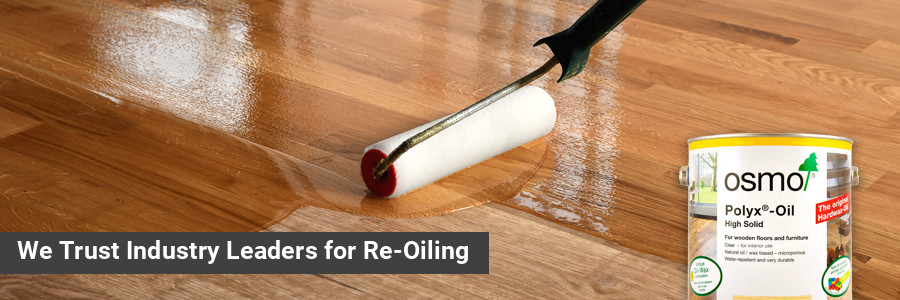
Floorworks Professional Touch: Why a DIY Approach Can Fall Short?
While it might be tempting to tackle an oil re-coating project by yourself, the benefits of a professional service are significant:
Expert Preparation: The key to a long-lasting finish is meticulous preparation. Our team has the professional equipment and expertise to thoroughly clean and, if necessary, lightly buff the floor to ensure the new oil penetrates evenly and adheres properly.
Even Application: Achieving a flawless, streak-free finish requires skill and the right tools. Our experienced technicians ensure the oil is applied evenly for a beautiful, consistent result.
Time and Convenience: A professional service saves you the time and hassle of moving furniture, sourcing the right products and equipment, and the labour-intensive application process. We work efficiently to minimise disruption to your home.
Avoiding Costly Mistakes: Incorrect application of oil can lead to a sticky, uneven finish that is difficult and costly to rectify. With Floorworks, you can have peace of mind knowing the job is done right the first time.
How Much Does a Professional Re-Oiling Service Cost?
The cost of our professional re-oiling service can vary depending on the size and condition of your floor. As a general guide, you can expect to pay between £12 to £16 per square metre.
What You Need to Know Before You Book Re-Oiling
Wood floor re-oiling is a maintenance service and is only applicable for oiled wooden floors where the sealant has not been completely worn out. It is a service to maintain the amount of hardwax-oil protection on your floors, by bonding to the previously applied coats. The re-oiling service will not be able to improve finish to floors that have been badly damaged, scratched or have areas where the oil is completely worn out. In such case a complete floor sanding and re-sealing service will be required.
Regular, on time re-oiling is very important to avoid floor sanding for as long as possible.
Oil-based finishes are slow drying. A new coat of oil can take between 4 horus and 12 hours to dry completely. Please, advise if any pieces of furnutre, cannot be removed from the areas requiring treating, and allow extra day for completing the works in stages.
Consider that, application of new hardwax-oil coats on stairs will restrict access during the drying time of the new coat.
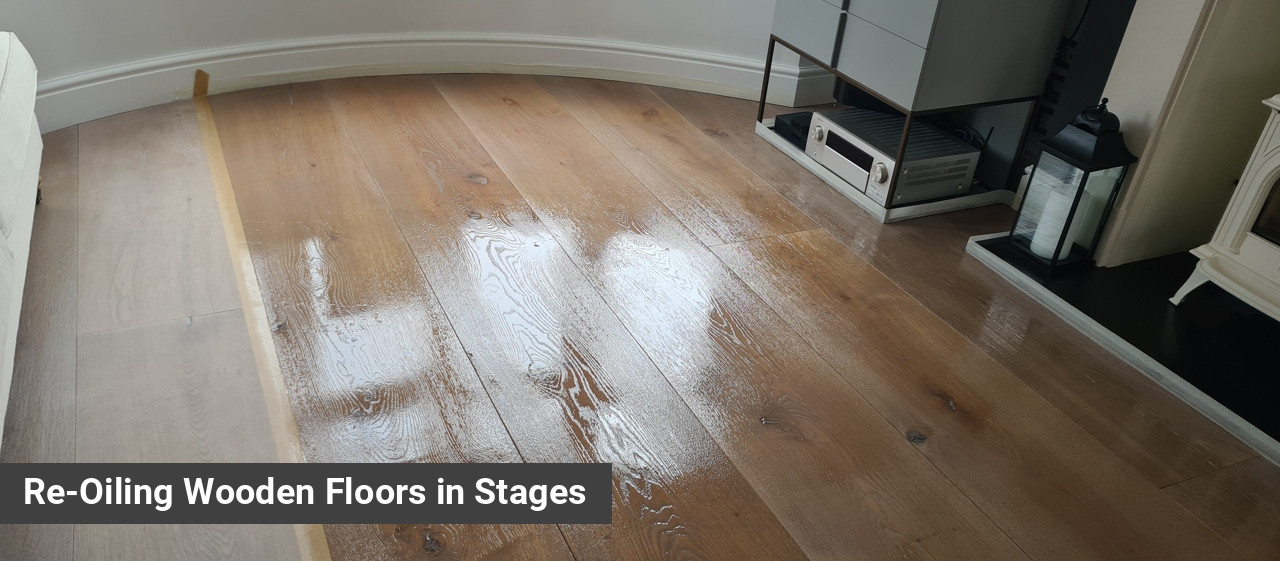
Why Choose Floorworks Re-Oiling Service?
At Floorworks, we are passionate about wood flooring. We understand that your floor is a significant investment, and our goal is to help you protect and enhance that investment. When you choose our re-oiling service, you are choosing:
- Experience and Expertise: Our team consists of highly skilled and experienced flooring professionals who are dedicated to delivering exceptional results.
- Quality and Professionalism: We use only the best products and equipment to ensure a durable and beautiful finish for your floors.
- Transparent and Fair Pricing: We provide clear, upfront quotes with no hidden costs.
- Customer Satisfaction Guaranteed: We pride ourselves on our commitment to customer satisfaction and will work with you to ensure you are delighted with the results.
